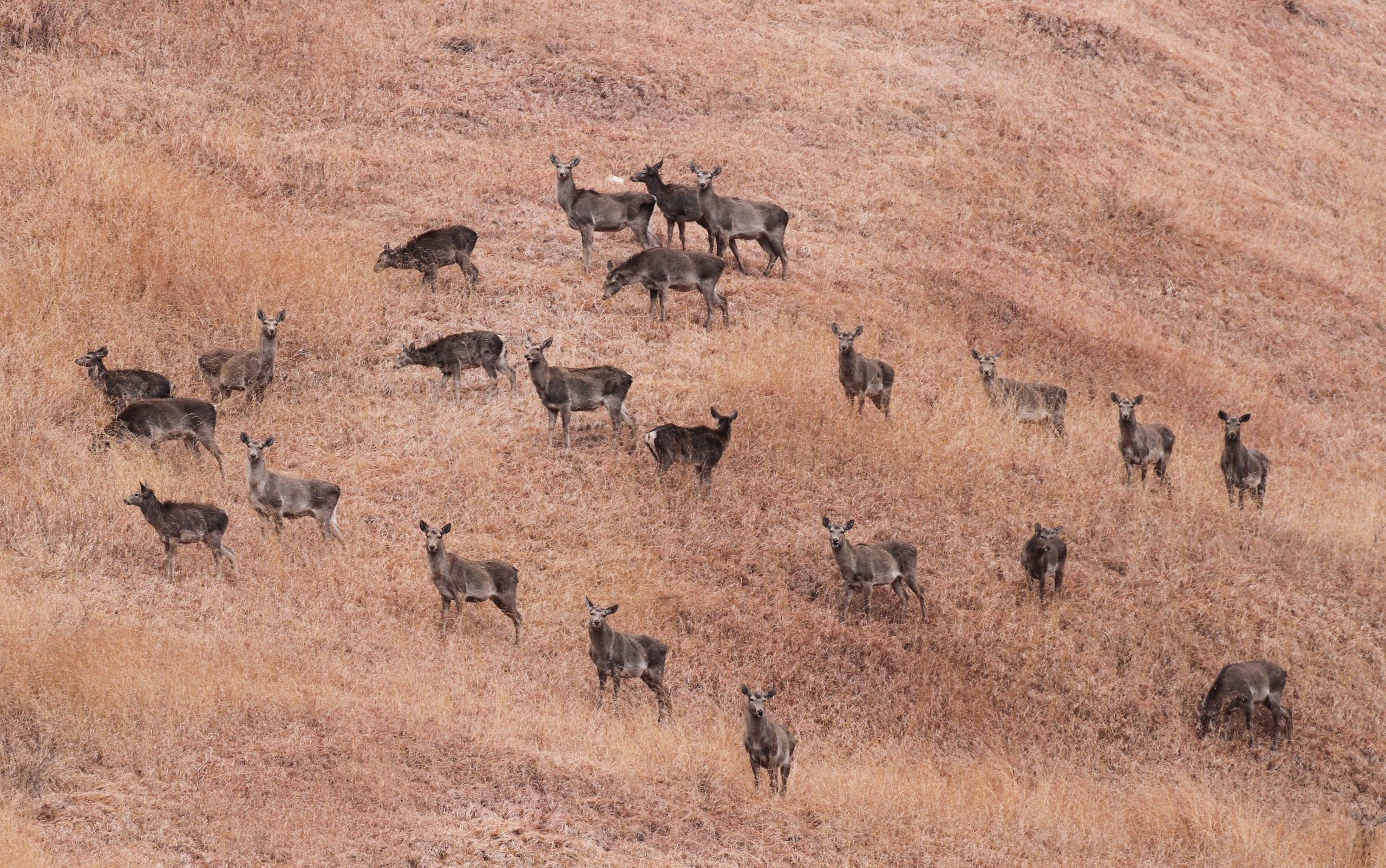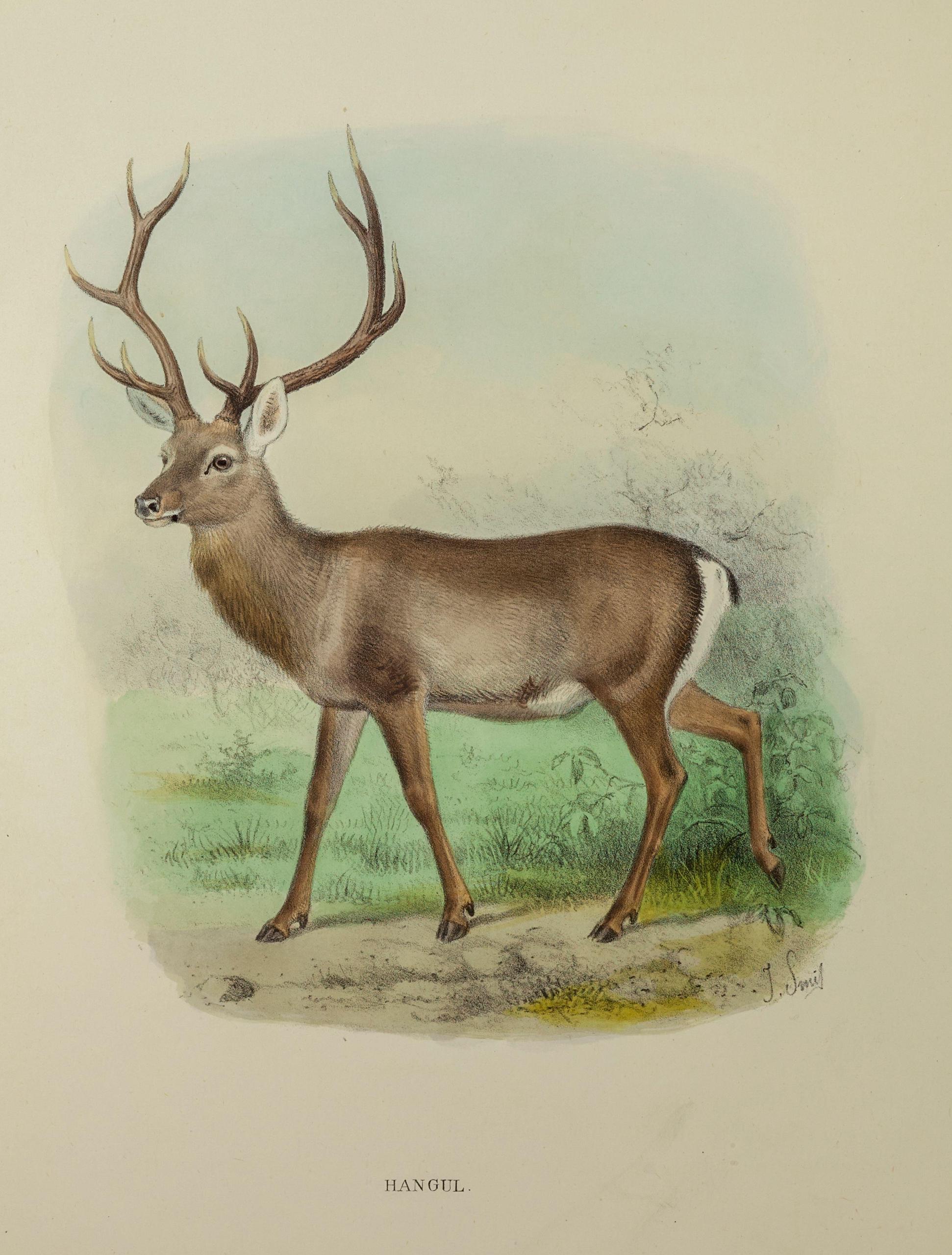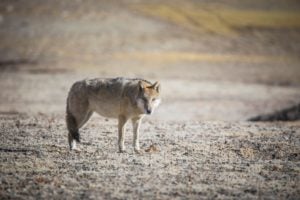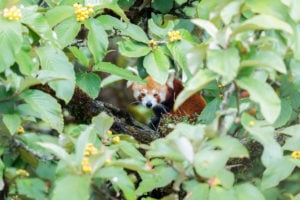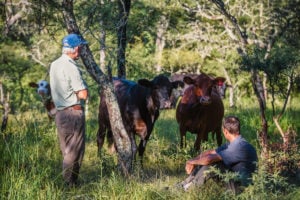Nestled amidst the breathtaking landscapes of Kashmir lies Dachigam National Park. Three decades ago, Ghulam Ahmad Bhat became the forest guard here – a role previously held by his father. His patrols across the park used to feature regular encounters with large herds of the area’s majestic hangul deer, also called the Kashmir stag. But such scenes have become increasingly rare now.
“In the past, we would see large groups of hangul – quite often 40, 50, even as many as 70,” says Bhat, referring to the 1990s when he began working. Today, he says the herds are much smaller, comprising 10-20 individuals.
Endemic to the hills of Kashmir, the hangul deer (Cervus hanglu hangul) is the only species of red deer in the Indian subcontinent. Numbers of the hangul fell from a high of 3,000-5,000 at the beginning of the 20th Century to only about 150 individuals by 1970.
Today, the hangul deer are primarily restricted to the 141 square kilometres of Dachigam National Park. The International Union for Conservation of Nature (IUCN) classified the species as critically endangered in 2016, estimating that 100-150 mature individuals remained; the hangul’s survival is precarious.
An ‘extinction vortex’
An August 2023 research paper, based on data from January 2001 to March 2020 suggested that with a population of less than 200 individuals, the hangul “may be in a terminal phase of decline and could become extinct if effective interventions are not implemented. The population could remain trapped in an extinction vortex because of its small population size, reduced genetic variability and small range.”
The study estimated the sex ratio as 0.15, or 15 males to a hundred females, “suggesting a high mortality of adult males”. It went on to note that, “This is a marked decrease compared to historical reports for the hangul, which reported 25-30 males per 100 females”. Its lead researcher, Khursheed Ahmad, head of wildlife sciences at Sher-e-Kashmir University of Agricultural Sciences and Technology, says that the gender imbalance may be because the hangul population is experiencing unprecedented stress and depression, resulting in higher-than-normal numbers of male foetuses being aborted.
Meanwhile predation by both domestic and feral dogs, poaching, habitat degradation and food insecurity caused by livestock grazing all contribute to declining hangul numbers. In addition, the report found that high fawn mortality rates are exacerbating these problems and stunting genetic diversity.
A population monitoring exercise done in 2023 estimated a slightly higher population of 289 hangul. Done every two years, the surveys show a steady, if slow, growth in numbers from 2015 when the population was 183 individuals. It nevertheless cited similar concerns as Ahmad on the habitat fragmentation, poaching, disturbances to habitat and skewed sex ratio.
Genetic sampling reveals a more hopeful picture
A recent report, published in the Oryx journal in December 2023, came to very different conclusions. Based on the use of genetic data gathered in Dachigam National Park during November 2019 – February 2020, the report identified 293 individuals (208 females and 85 males), and using statistical modelling, argued that the hangul population could be as high as 394 individuals. The much higher gender ratio of 0.41 in the Oryx report is attributed to the higher accuracy of genetic sampling versus using sightings to differentiate between sexes.
Furthermore, the report states that, “The genetic diversity of the Critically Endangered hangul population… is comparable to that of several red deer populations (categorised as Least Concern on the IUCN Red List) across Europe and parts of Asia”. According to Tanushree Srivastava, a co-author of the report and a biologist at the Wildlife Trust of India – a nongovernmental conservation organisation, “This provides hope for the survival and expansion of the only red deer population in the Indian subcontinent.”
Ahmad is unconvinced by the findings of the Oryx report, saying that if these findings were correct the hangul population would have increased far more than it has. “There is no prior work or baseline study on the genetic angle so its reliability is subjected to further investigation and research”, he says.
Questions over funding hangul conservation efforts
Noam Werner, Co-Chair of the Special Survival Commission for Deer Specialist Group at IUCN says, “India has reported great success in conservation and recovery of wildlife. Hangul, however, is lagging behind and needs prime focus in terms of investments, governance and policymaking.’’ Rashid Naqash, a regional warden with the Kashmir Wildlife Protection Department, says conservation projects, “require vital support and enough funding to make them a success.” Instead of a dedicated hangul fund, Naqash says money is sporadically allocated from other initiatives, which leads to fragmented efforts.
In response, Sarvesh Rai, the chief wildlife warden of Jammu & Kashmir, tells The Third Pole that there is no dearth of funds. “We’re making efforts, making breeding centres and taking necessary steps. I don’t see any problem,’’ he says.
This is despite the fact that a hangul conservation action plan (2021-2031) prepared by the wildlife department notes, “the timely allocation of the funds usually does not take place. Sometimes release of funds take place at the… end of year, which result into a great difficulty in achieving the annual targets.” Speaking on the condition of anonymity, a forest department official says that the funding for even this plan has been awaiting clearance for nearly three years.
Some progress among the gloom
The Third Pole spoke to environmental lawyer Nadeem Qadri, who coordinates the grassroots Save Hangul Campaign. Qadri hopes to train as many as 10,000 people in supporting local conservation efforts, fostering a culture of stewardship. Citing some progress, he says “We’ve succeeded in removing a sheep breeding farm inside Dachigam National Park after strenuous efforts.” They are now working to remove an army settlement and guest houses from Dachigam whose occupants routinely disturb hangul habitats, particularly during the critical breeding season.
A breeding programme has also been established in Shikargah, at a conservation facility connected with Dachigam. This is in response to low male gender ratio among hangul. “We’ve two females there currently, under proper care and surveillance,” says Naqash. “This will be the first breeding centre of its kind in Asia.”
In the meanwhile, Bhat, the forest guard, desperately hopes that something will work and sightings of the hangul will increase. “This job as a forest-guard is my bread and butter,” he says.
